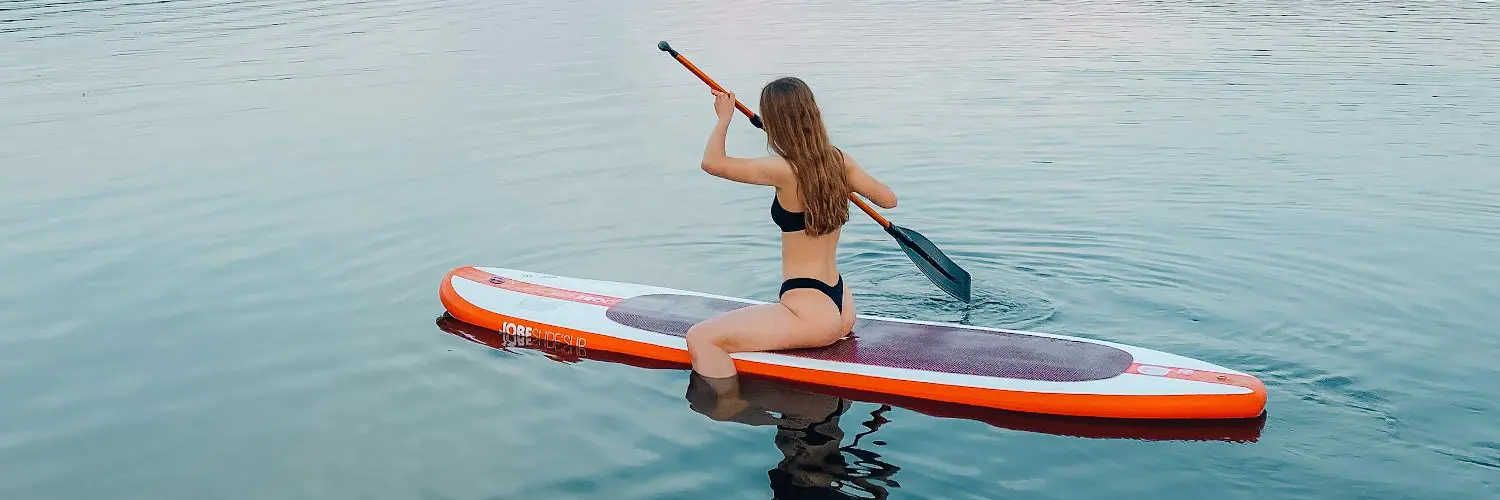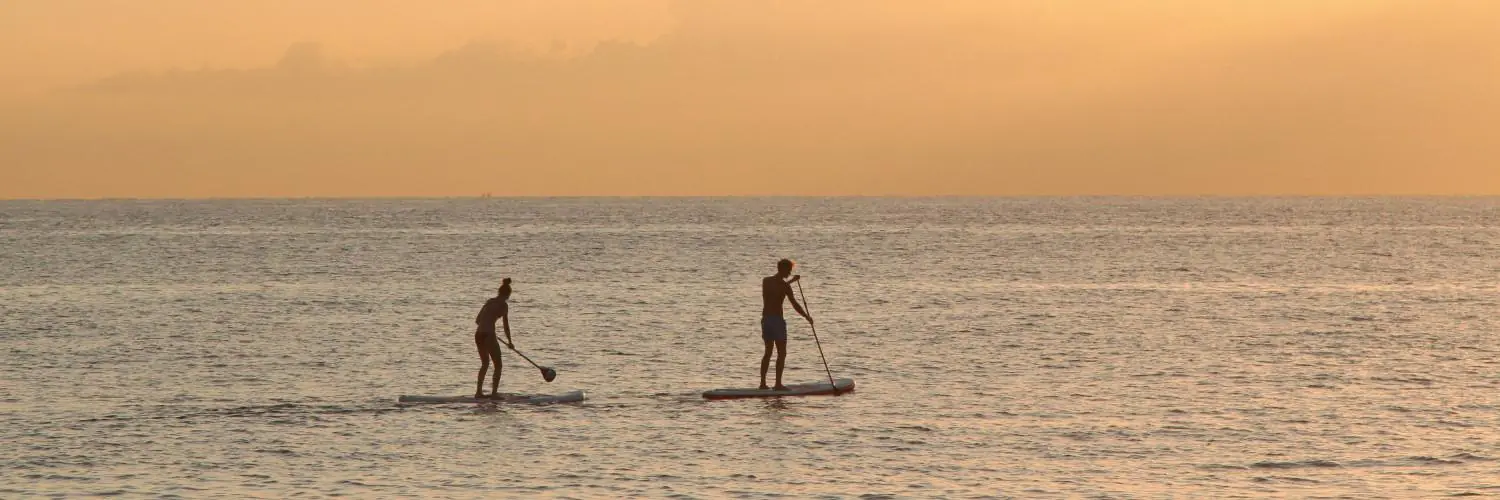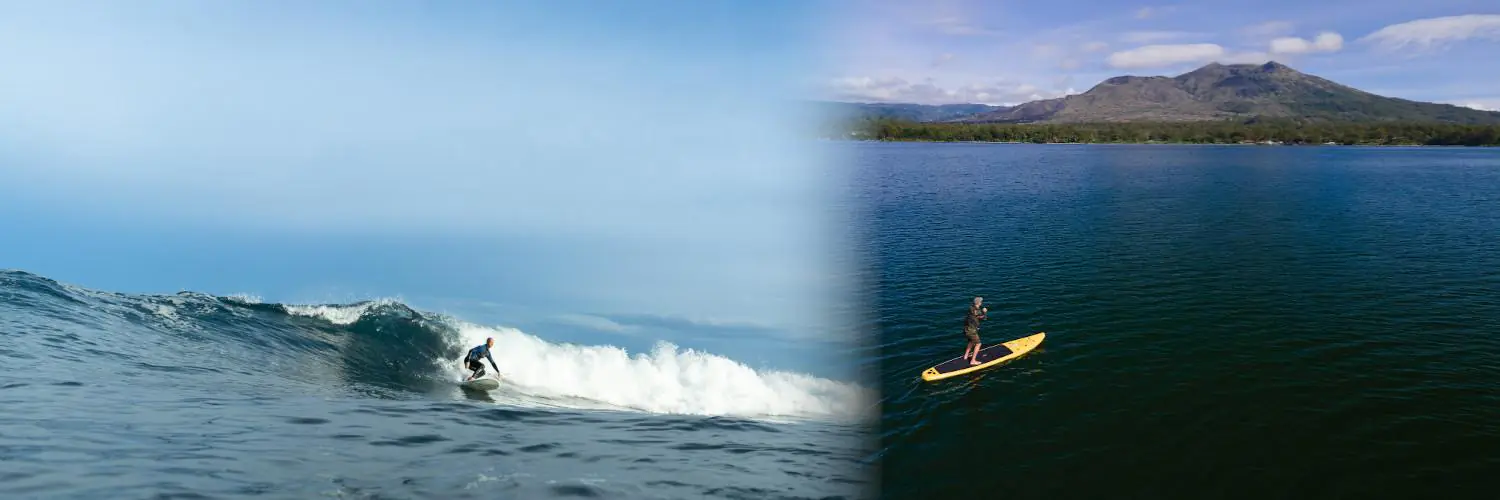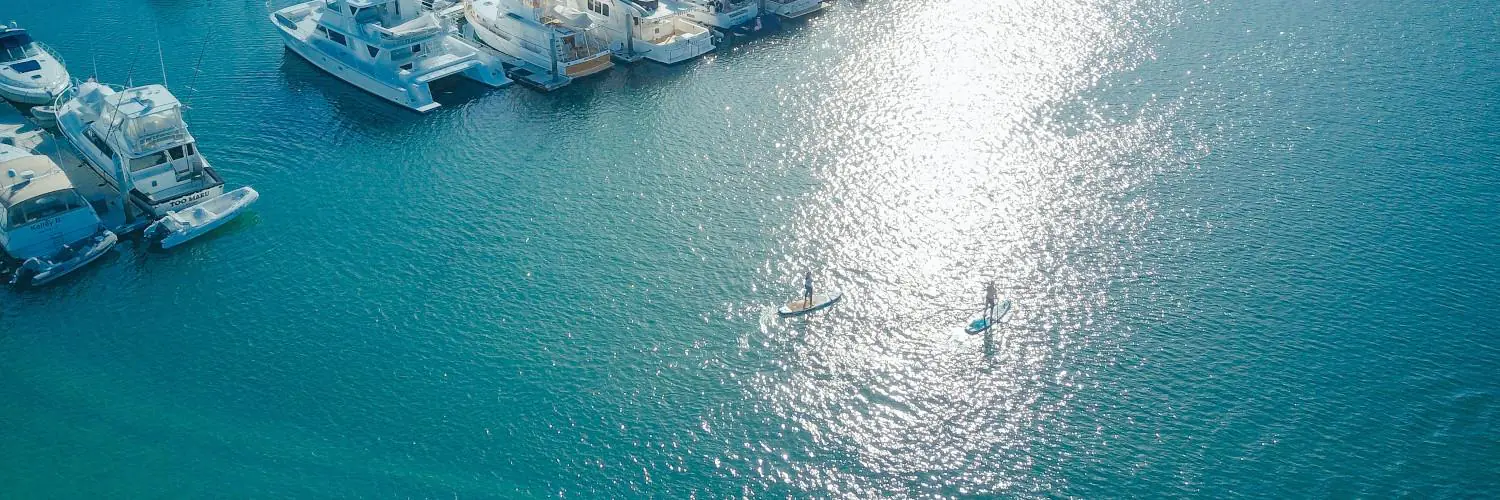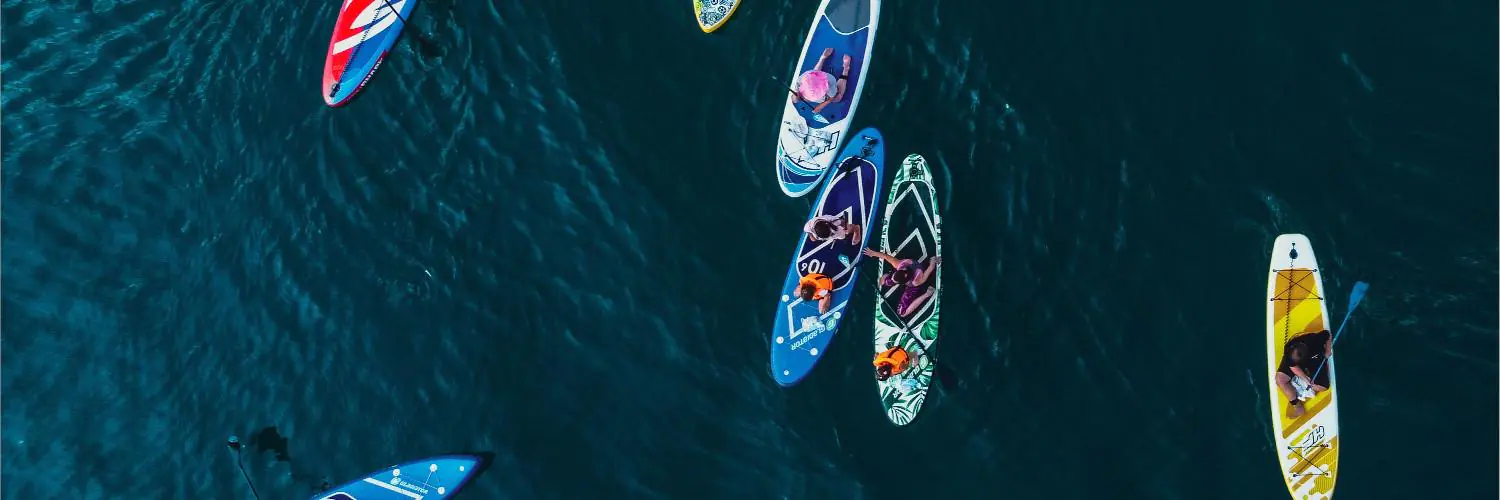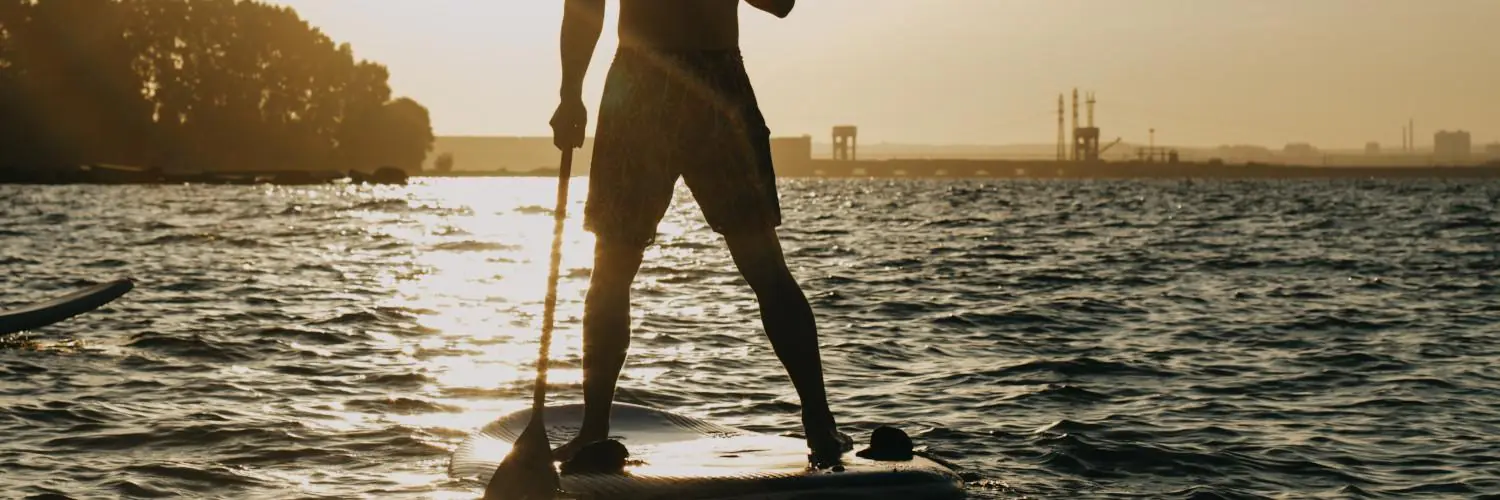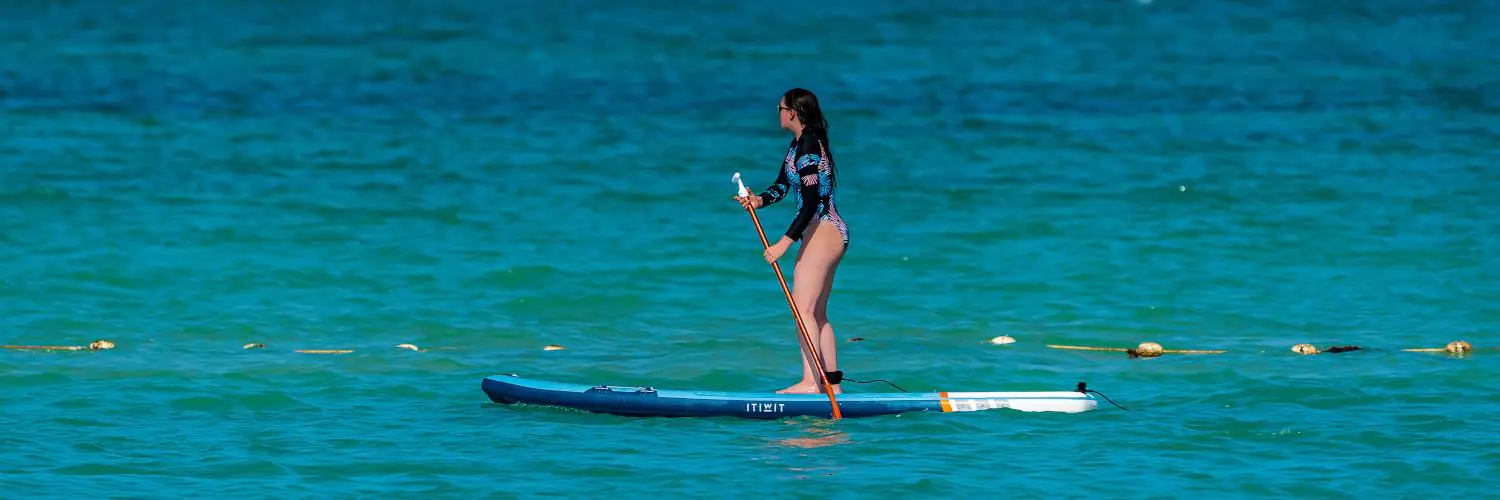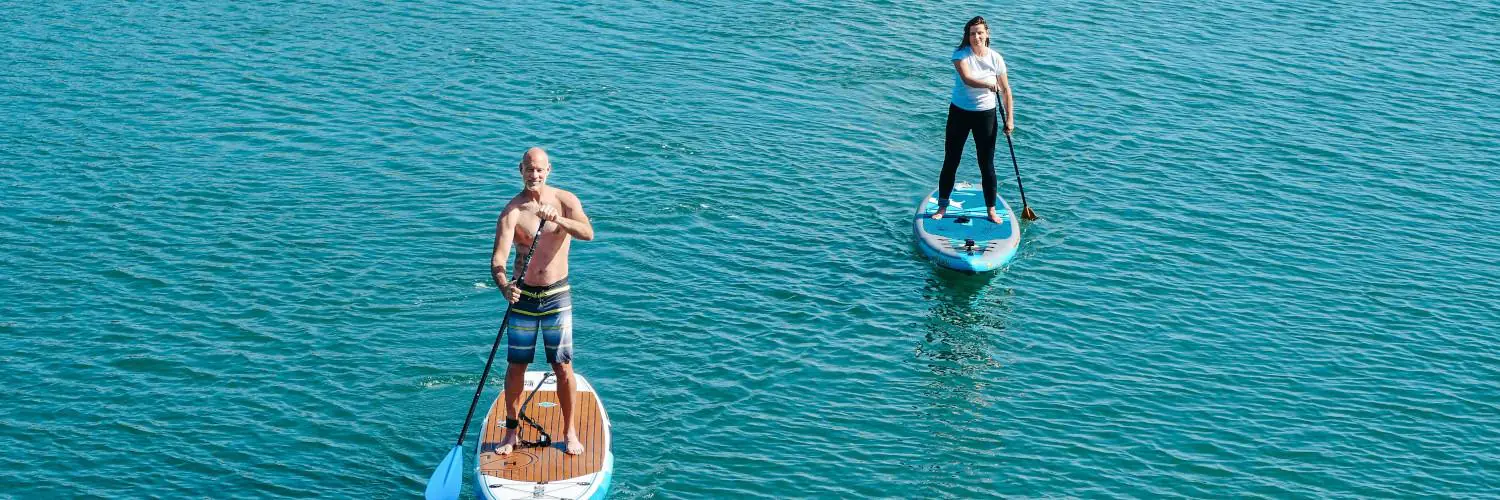Stand-up paddleboarding (SUP) offers a serene and invigorating way to explore Glacier National Park. The park, known for its rugged mountain ranges and pristine lakes, provides an ideal landscape for paddleboard enthusiasts SUP allows visitors to glide across the clear waters of Lake McDonald, the largest lake in the park, while enjoying the reflection of the vast Montana sky and the towering peaks that surround it. The activity is not just limited to Lake McDonald; numerous waterways within the park present ample opportunities for paddleboarders of all skill levels to connect with the tranquil natural environment.
Glacier National Park, with its diverse ecosystems and awe-inspiring scenery, serves as a unique SUP destination. Paddleboarders are graced with the chance to navigate the tranquil waters amidst a backdrop of dense forest trees and dramatic mountain skylines, including views of the Continental Divide. The park’s geography offers a quiet escape where paddlers can enjoy the sounds of nature and potentially encounter local wildlife from a respectful and safe distance. The experience of stand-up paddleboardingin Glacier National Park is not just a physical activity but also an immersive way to appreciate the serene beauty and majesty of the Montana wilderness.
Table of Contents
Essential SUP Gear and Rentals
In Glacier National Park, visitors have the opportunity to engage in the unforgettable experience of stand-up paddleboarding (SUP) amidst stunning landscapes. For a safe and enjoyable adventure, proper gear and reliable rentals are non-negotiable essentials.
Paddleboard Rentals in Glacier National Park
Visitors to Glacier National Park can rent paddleboards from various outfitters located around the area, specifically near Lake McDonald, the park’s largest lake. The rentals often come with the necessary paddling equipment such as a paddle and a leash, ensuring both convenience and safety while on the water. Rentals are available for different durations, from one hour to a full day, allowing paddlers to choose according to their itineraries.
- Outfitters: Located conveniently in places like Apgar Village.
- Rental options:
- Single paddleboards
- Tandem paddleboards, for two persons
- Additional Rentals:
- PFD (Personal Flotation Device): Mandatory for safety.
- Leash: To keep the paddleboard attached to the paddler.
- Dry Bag: To protect personal belongings from getting wet.
Safety Equipment and Clothing
Safety comes first, starting with a PFD (life jacket), which is required to protect paddlers in case of an accidental fall into the water. Glacier National Park’s regulations enforce the use of PFDs for all paddleboarding activities. Additionally, paddlers should wear clothing suitable for varying weather conditions and water temperatures. A safety whistle and a bear spray are highly advisable, considering the local wildlife and remoteness of certain areas.
-
Essential Safety Gear
- Life Jacket (PFD): Provides flotation and visibility.
- Leash: Secures the paddler to the paddleboard.
- Safety Whistle: For attracting attention in case of emergency.
- Bear Spray: A safety precaution in wildlife habitats.
-
Recommended Clothing:
- Quick-dry fabrics
- Layered clothing suitable for changeable weather
- Water shoes or strapped sandals
Having these essentials in check, paddleboarders will be ready to explore Glacier National Park’s waters with confidence and peace of mind.
Popular SUP Destinations and Launch Points
Glacier National Park offers a dazzling array of SUP destinations. From the iconic Lake McDonald to the interconnected waters of the Flathead River system, paddleboarders find perfect launch points for their aquatic adventures.
Lake McDonald and Apgar Village
Lake McDonald is the largest lake in Glacier National Park, spanning 10 miles in length. Apgar Village provides convenient access, with amenities and rentals for visitors. The lake’s crystalline waters are framed by forested shores and towering mountains, making it a premiere paddleboarding spot
- Key Features:
- Length: 10 miles
- Access Point: Apgar Village
- Scenery: Forests and mountains, including views of the Continental Divide
Flathead River and Lakes
The Flathead River flows into Flathead Lake, creating a dynamic paddleboarding region in Western Montana. Paddleboarders can explore both the calm sections of the river and the extensive shoreline of Flathead Lake.
-
Flathead River:
- Characteristic: Calm sections for beginners
- Area: Extensive network connecting to Flathead Lake
-
Flathead Lake:
- Description: The largest natural freshwater lake west of the Mississippi
- Shore: Over 160 miles of shoreline to explore
Hidden Alpine Lakes
For those seeking solitude, Glacier National Park’s hidden alpine lakes, such as Bowman Lake, offer a serene SUP experience. Access can require a hike, making these spots less crowded but incredibly rewarding with untouched natural beauty.
- Bowman Lake:
- Length: Approximately 7 miles
- Quality: Tranquil, surrounded by wilderness
- Note: Access may involve hiking
SUP Techniques and Tips
Stand-up paddleboarding (SUP) in Glacier National Park offers breathtaking scenery, making technique and safety all the more crucial for an enjoyable experience. Both beginners and seasoned enthusiasts find varying conditions that challenge their skills.
For Novices and Enthusiasts
For those new to paddleboarding, basic techniques are essential. Beginners should start with learning the proper stance: feet shoulder-width apart, knees slightly bent, and weight evenly distributed. They should also be familiar with the basic strokes such as the forward stroke, reverse stroke, and sweep stroke to maneuver effectively.
- Forward Stroke: For propulsion on the water.
- Reverse Stroke: To slow down or reverse direction.
- Sweep Stroke: To turn or correct course.
Enthusiasts understand the importance of these strokes in maintaining balance and control, especially when encountering various water body types, from calm lakes which are ideal for beginners, to the occasional moving water experienced in a park with such diverse waterways.
Handling Weather and Water Conditions
Weather in Glacier National Park can change rapidly, affecting water conditions. Paddleboarders should always check the local weather forecast before heading out.
- Wind: Calm days are best for beginners. Side and headwinds require more effort and advanced techniques.
- Moving Water: Paddleboarders should have experience or opt for guided tours when considering SUP on flowing waters or near rapids, especially during spring runoff when rivers move faster.
For safety, paddlers should always inform someone of their plans, wear a life jacket, and ideally, not SUP alone. In the case of wind or changing weather, it is crucial to stay near the shore and be prepared to kneel or sit to lower one’s center of gravity and increase stability. Tours for beginners can provide a structured, safe environment such as a calm lake tour in a more controlled setting that allows for learning and enjoyment without the unpredictability of open water conditions.
Wildlife and Fishing while SUPing
In Glacier National Park, paddleboarding offers more than just scenic views; it presents an opportunity to experience the park’s wildlife and engage in fishingamidst a serene and natural setting.
Fish Species and Habitat
Glacier National Park’s waters are a haven for a variety of fish species, contributing to a vibrant aquatic ecosystem. Anglers may find native fish such as bull trout and westslope cutthroat trout. Non-native species like lake trout and rainbow trout are also present, although the park actively manages these populations to favor native species. The pristine habitats range from large lakes to alpine streams, each supporting different fish communities.
- Native Fish
- Bull Trout
- Westslope Cutthroat Trout
- Non-native Fish
- Lake Trout
- Rainbow Trout
Montana regulations require a Conservation License for fishing which can be obtained by anyone over the age of 12.
Encountering Wildlife
Paddleboarders in Glacier National Park should be prepared for possible wildlife sightings, including both aquatic and terrestrial species. The park is home to a diverse range of animals, such as bald eagles, grizzly bears, mountain goats, and more that thrive in its various habitats. While on the water, one might spot otters frolicking or hear the call of loons echoing across the lake.
To ensure safety and conservation:
- Maintain a safe and respectful distance from wildlife.
- Be alert and aware of one’s surroundings, especially considering the possible presence of bears.
- Avoid approaching or feeding animals to preserve the park’s delicate balance and respect the wild nature of the park’s inhabitants.
Planning Your SUP Adventure
Embarking on a stand-up paddleboarding (SUP) journey in Glacier National Park requires thoughtful preparation. Visitors should consider whether they prefer guided experiences or solo explorations, as both options have distinct advantages.
Guided Tours and Lessons
For those new to SUP or seeking a deep dive into the park’s waterscape, guided tours offer an insightful way to navigate Lake McDonald and other bodies of water. Guides can provide valuable lessons, pointing out hidden gems and ensuring safety. Visitors should book their tours in advance, especially during peak vacation months, to secure their spot.
- Availability: Tours are typically available during the summer season.
- Cost: Expect varying prices based on tour length and group size.
- Key Locations: Lake McDonald Lodge area is a popular starting point.
Guided tours not only equip participants with necessary skills but also may include interesting facts about the park’s history and ecology.
Accommodations and Transportation
Visitors should plan their accommodations well in advance, as campgrounds and hotels near the park can fill quickly, especially during peak season. Parking can be limited, so knowing the available options near SUP entry points such as Going-to-the-Sun Road is crucial.
- Campgrounds: Reservations may be needed; check availability early.
- Parking: Early arrival is recommended, as lots fill quickly.
- Transportation: Consider shuttle services if staying outside the park.
Those staying at or near Lake McDonald Lodge will find it conveniently located close to rental and tour offerings, making it a strategic choice for SUP enthusiasts.

